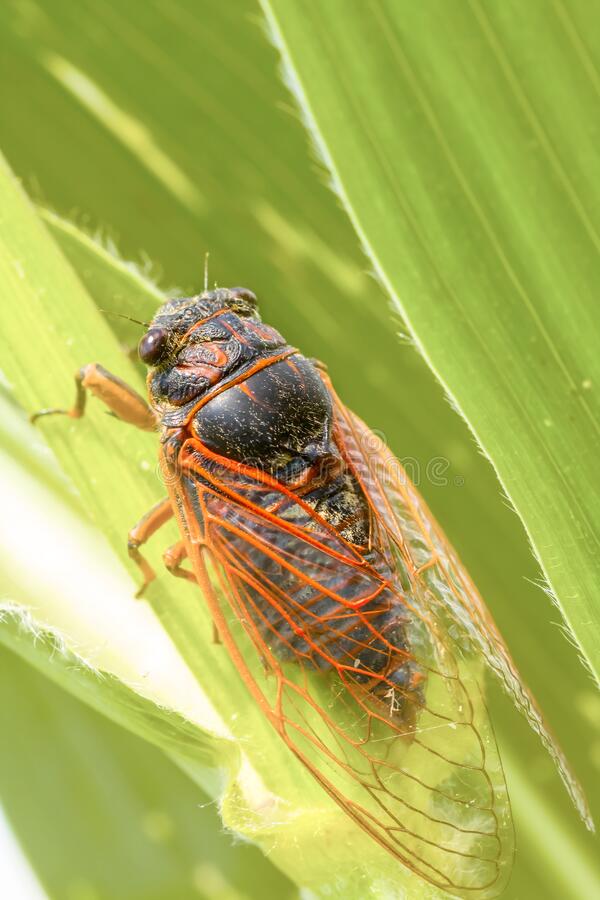Corn Leafhoppers Becoming Important Corn Pest in Brazil

Over the last few years, farmers in southern Brazil have been fighting a new insect pest that has impacted their corn production. The pest is corn leafhoppers (Dalbulus maidis) and it was first identified in Parana in 2017.
Corn leafhoppers can transmit a bacterium in the Mollicutes class and a virus. Once a corn plant is infected the leaves turn colour with red strikes, the vigor of the plant quickly declines, plants do not develop normally, they exhibit stunting and dwarfing, ears are smaller than normal and with less grain. The extend of yield losses vary by the level of infection and the timing of the infection but can easily reach 50%.
Since it is such a new pest, farmers and researchers are still learning on how to control the insect. During the current safrinha corn growing season in western Parana, the minimum number of insecticide applications was 4 with some farmers applying as much as 8 applications.
The adequate control of the insect is aggravated by two factors – they can reproduce very quickly and they easily migrate over long distances. Under favorable conditions, each female can complete a life cycle in 24 days laying up to 600 eggs as an adult. Populations can increase dramatically with multiple generations during a single growing season.
The insect can also easily migrate from one corn field to the next. It can fly 2-5 kilometers looking for new corn to infect and there are reports in the literature that it can migrate up to 30 kilometers. It tends to migrate from older corn to younger corn, so it is important not to have corn in various stages of development next to each other.
One of the problems in states such as Parana is that corn is grown over a prolonged period of time with the first corn crop planted in September and the safrinha corn crop planted in January and February. Therefore, there is corn growing in the state for ten months in a row. This allows for multiple generations of the insect during a single growing season. Even between growing seasons, the insect can survive on sorghum, various grasses, wheat, and on volunteer corn that may have germinated in recently harvested fields.
Farmers in Parana first noticed the corn leafhopper in 2017, but within two years, the insect was causing yield losses in western Parana. A year later it was causing losses in various regions of the state and in the five years since it was first identified in Brazil, it has spread to most of the corn growing regions of Brazil.
According to CABI Plantwise Knowledge Bank, the corn leafhopper has only rarely been reported as a direct pest of maize, causing feeding damage and decline of the host by the removal of plant sap. However, the leafhopper is a significant pest as a vector of three stunting pathogens: corn stunt spiroplasma (CSS), Spiroplasma kunkelii; maize bushy stunt phytoplasma (MBSP); and Maize rayado fino virus (MRFV).
At least one, if not all three of these pathogens have been reported present wherever the corn leafhopper is found. The diseases are frequently reported occurring sporadically in many regions but can cause widespread and serious disease in newly introduced, non-adapted maize varieties and especially where maize is grown throughout the year, with irrigation during the dry season. Damage to maize is most severe when plants are inoculated at the seedling stage, however, grain yield may significantly decrease even when plants are infected at the 16-leaf stage.
All three stunting pathogens are persistently transmitted by the corn leafhopper; once an insect becomes a vector, it transmits for life. The pathogens multiply in the vector and undergo a latent period; after the corn leafhopper acquires the pathogen by feeding on an infected plant, a period of 2 weeks for MRFV, and 3-4 weeks for CSS and MBSP, must pass before vectors become inoculative.
In Northern Argentina, CSS is a restrictive factor for maize production, with incidences ranging from 12 to 62%. In severely affected maize crops, the disease reduces total production by a mean of 70% (range 50-90%).
Bottom line – Corn leafhoppers are another pest that Brazilian farmers will have to learn how to control. For the next few years, the pest will result in some yield losses and it will increase the cost of production, but Brazilian farmers will continue to increase their corn acreage due to the strong prices.
Read also
Wheat in Southern Brazil Impacted by Dry Weather and Frosts
Oilseed Industry. Leaders and Strategies in the Times of a Great Change
Black Sea & Danube Region: Oilseed and Vegoil Markets Within Ongoing Transfor...
Serbia. The drought will cause extremely high losses for farmers this year
2023/24 Safrinha Corn in Brazil 91% Harvested
Write to us
Our manager will contact you soon



